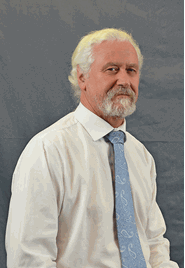 Peer review: Peter Dearman
Peer review: Peter Dearman
Senior Programme Manager, Engineering, Bechtel
Philip Haigh asks whether the UK will have the grid capacity to power electric traction systems as we expand the electrified network. Furthermore, he ponders whether the emerging cost of electrification will give rise to re-assessment of the return on investment, challenging the commitment even to finish schemes already started, let alone any expansion of that programme.
The article highlights that across the whole history of railways, those who truly understand the operation and engineering of railways would not seek to debate the fact that electric railways are superior. Indeed, I would point out that the benefits of keeping power generation off the moving vehicles has been understood from the very beginning.
Brunel did not have access to electrical systems, so he had to look to a mechanical solution. The atmospheric railway was his. In an alternative history where electric traction was developed 60 years before it actually was, it is interesting to conjecture whether the steam locomotive would ever have been developed. I doubt it.
By common consent then, electric traction, with fixed infrastructure power distribution, is superior to all other forms of railway traction. Train performance is better and more consistent. Maintenance costs for both the trains and the infrastructure is lower. Operational availability of trains is better, thus overall fleet size is smaller. Aspinall and Vincent Raven (CME NER) were the pioneers who sparked (pun intended) electrification in the UK - they built while others talked.
Philip appears to question if it was wise to close Manchester-Sheffield-Wath in the early 1980s, and challenges whether that decision helped or hindered BR’s case for East Coast Main Line electrification. The fact is that MSW followed the path trodden by the earlier electrified main line (Shildon to Newport). Both routes were electrified to facilitate the most efficient and effective haulage of heavy mineral traffic. Both were an outstanding success - increasing tonnage per train, reducing operating costs and delivering unprecedented reliability. But both met their end because the traffic they were built to convey went away.
Any business has to make tough decisions, and closures of these routes are examples of such decisions. So I am firmly in agreement with Frank Paterson - if BR had ignored the logical conclusion that without revenue MSW must close, why would any investor consider placing more capital into BR. Of course MSW had to close - to suggest that it should not just because it was electrified is perplexingly illogical. It had earned a return for 25 years, and it had contributed a huge amount to the development of technology. Its closure was in a way part of its success - without that proper business decision, ECML would not have been authorised in 1984.
ECML has been criticised over some years as a scheme “done on the cheap”. Post privatisation OLE reliability was on a downward trend. BR Mk 3 OLE has had its detractors, with comments about the “inferiority” of aluminium conductors and the vulnerability of headspan structures. A major part of the problem was that an inadequate maintenance regime and failure to programme renewal exposed the railway to performance damage.
Network Rail Route Managing Director Phil Verster, in his time in York, recognised this and relentlessly drove implementation of a better maintenance and renewal programme. As a result, ECML performance is now at high levels.
The history of the suspension of the Euston, Manchester and Liverpool electrification in the early 1960s is only interesting if you are prepared to learn the lessons. So here is my view on what it can teach. Those lessons are that route rationalisation as a pre-cursor to electrification is essential if excessive cost in electrification is to be avoided.
Second, the electrification equipment must be simple and constructible. The failure to route rationalise London Midland before electrification and the BR Mk 1 both contributed to the overspend. By the time BR embarked on the WCML north of Weaver Junction, route rationalisation and resignalling (RR&R) had become the preparatory steps, and BR Mk 3 was developed. That was arguably the dawn of the most successful period of OLE rail electrification in the UK. ECML was the biggest example of the success of this whole system approach.
The industry is now having to re-learn those lessons. The start on GW has satisfied no one, but, the whole industry is beginning to act. My own view is that Series One is an excellent OLE system. However, as it stands, there is scope for value engineering to make it cheaper (I am not embarrassed by that word - cheap does not mean poor quality), and that cost reduction is not only material, it is about construction cost. Series One is therefore now where BR Mk 1 was. Engineers today must react positively as they did in the 1960s, and relentlessly engineer cost out.
The power for electrified lines comes from the grid. Power generation connected to that grid must obviously match the national demand. The UK generation capacity is a complicated picture, but I am more interested in what our industry can do.
Our electric traction systems must become more energy-efficient, and our trains must do the same. We have fallen behind other transport industries, with road and air making high-percentage energy improvement. Other nations’ railways are building more energy-efficient trains, as much as 40% improved. Ours are trending in the wrong direction. The grid will ultimately cope with the railway load, but better energy efficiency must be a goal.
- Peter Dearman works as part of the Network Rail/Bechtel alliance on the Great Western electrification project and has a background in railway traction electrification.











